
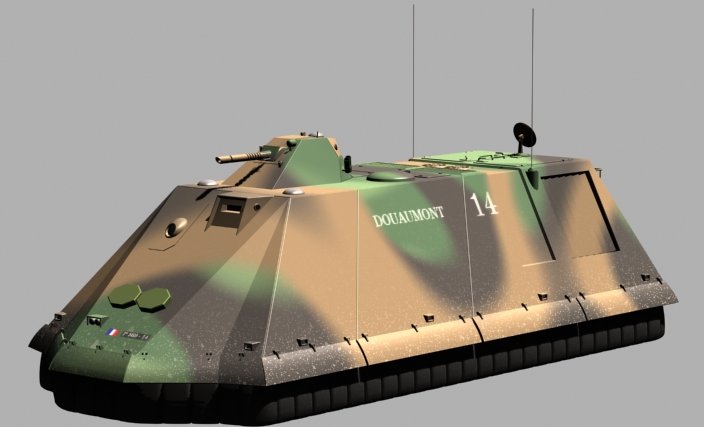
|
AC-12 Hovertank By D Hebditch and Laurent Esmiol Introduction The AC-12 is France's front-line Hover Battle Tank. Derived from the classic AC-8, the AC-12 is a highly reliable, combat proven design. Alongside its German rival the LkPz-IX it is regarded as the leading HBT design. The basic AC-12 design has proved versatile enough to take repeated upgrades and modifications in its relatively short time in service. It has also proven a popular export item and is in service with several other nations including Brazil, Poland and Texas. Acknowledgement This article is based on the AC-12 as described in GDW's Ground Vehicles Guide. All images are by Laurent Esmiol. The AC-12T and ACC-20 are by James Boschma. Narrative Commandant Balan had been in near continuous combat for almost 24 hours now and his mind was fogged with fatigue. The Capus had launched their final push to encircle Fromme and cut off the troops fighting hard within it who had stymied the Capus for several days. Now the human forces' few remaining mobile armoured forces were desperately fighting to keep the route into the city open. Balan knew they were doomed. There were too many Capu, too few humans and worst of all no room to manoeuvre. In a battle of attrition the Kafers were bound to win. Balan's command, the 3e Escadron of the 12e Régiment d' Aero-Cuirassiers was down to a mere five AC-12s. As it was it was one of the stronger French sub-units left in the fight. The 12e RAC was the only unit on-planet equipped with the now standard AC-12bis, the Coloniale armour had the old AC-10, the US Marines their outmoded M9s whilst few Azanians had escaped the fall of their colony and made it to Fromme. He waited for the next Capu strike which could come at any minute. Virtually all of their drones had been lost and they lacked information on the enemy's dispositions and intentions. The battle had degenerated into a dog fight and so far only human tenacity had prevented a complete collapse. The AC-12bis had lived entirely up to its reputation forged by the early mark in the war against the Germany. The enhanced fire control and missile loads had proved vital in the series of combats against Capu battlegroups. In the hands of his 'Gros frères' with years of training and deployments to Central Asia behind them, they were definitely superior to the CAC-1 although the 1e Escadron had suffered a nasty surprise encounter with a Capu heavy tank now dubbed the CCC-1. But now the stocks of Manta ATGW were very low and the AC-12s suffering from lack of maintenance and battle-damage. The unrelenting tempo of the Capu attacks was wearing down his surviving crews. The demi-brigade reconnaissance screen reported another attack group forming up for another push. He ordered the escadron forward to their fighting positions as some of their last artillery missiles lashed overhead. They'd just started engaging the lead CACs when the 'sauve-qui-peut' came across the net. The battle was lost and a division of troops and thousands of civilians were to be left to the mercy of the Capus inside the city. Balan feared his own chances were not much better. Excerpt from 'The Fall of Kimanjano' by J.C. Dunleavy, Tirania Press, 2301
|
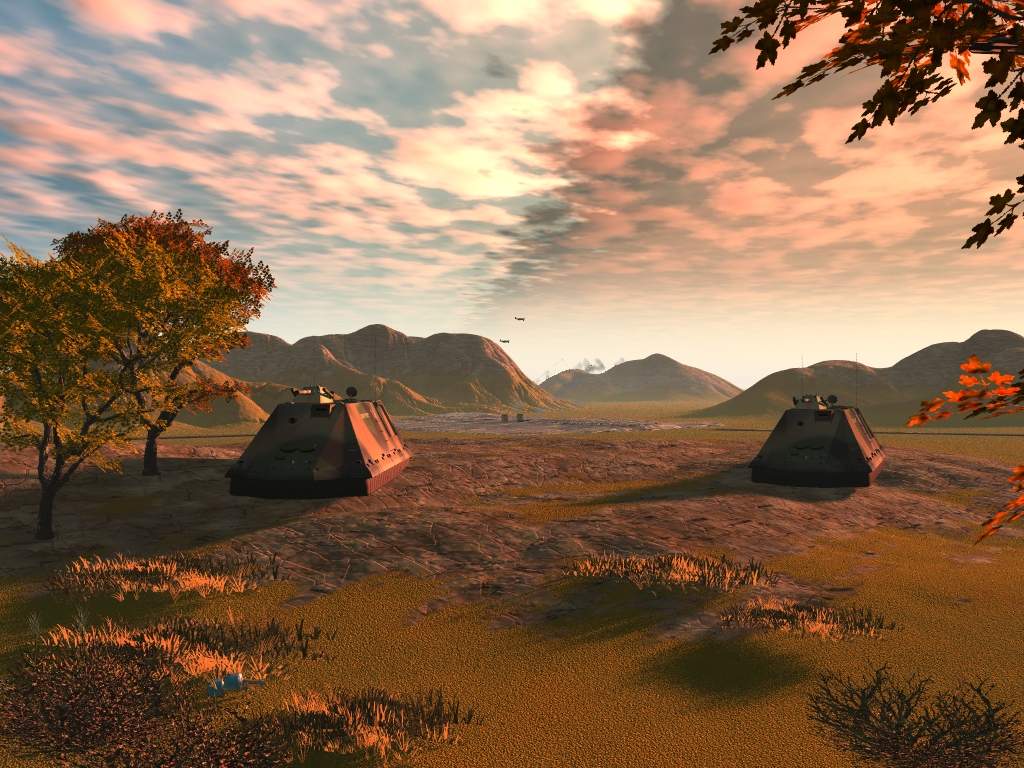
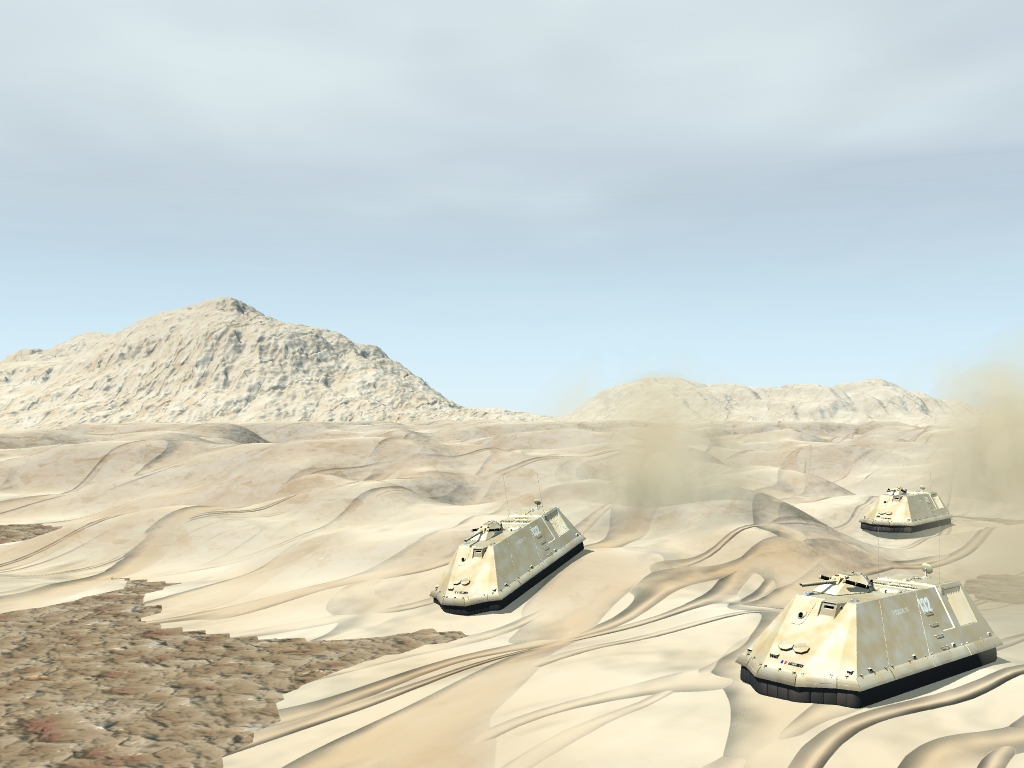
|
AC-12 The classic AC-12 is the vehicle which first saw action in the War of German Reunification. It is substantially roomier inside than the later AC-12bis which has much of the spare room taken up with ammunition. The AC-12 has slightly lighter armour, fewer missile reloads and earlier generation vectronics than its successor, however it is still a fine combat vehicle. Deliveries of the AC-12bis have been concentrated in the Armée de Manúuvre and Armée de Libération, so the baseline AC-12 is still commonplace in much of the French Army. It should be noted that there are no visible external differences between the AC-12 and the AC-12bis. AV = 100 Front
and Overhead Ar-Carro de Combate Modelo 20 (ACC-20)
The ACC-20 is the licence produced Brazilian version of the AC-12. In a deal signed in 2289 the Brazilians received a hundred AC-12s from Schneider and then commenced their own production run at the Arsenal Nacional plant in Fortaleza. The ACC-20 is very similar to the baseline AC-12 except for minor changes in the armament. The 25mm autocannon and 7.5mm machinegun have been replaced by more up to date Brazilian versions and the two Martel tubes have been replaced by a twin launch tube for the Escorpião-A light SAM. The ACC-20 equips the Brazilian 3rd Army on the Argentine border and is also in service with the Portuguese Army. For more details click here. AC-12T AC-12T is the designation for the AC-12 in service with the Republic of Texas Army since 2297. The AC-12T differs in the deletion of the Manta and Martel launchers and the attachment of twin MEWS pods to the turret, capable of carrying a range of weapons including Striker missiles. It also uses a different close defence system. So far Texas only has two battalions of AC-12Ts due to French production being switched to support the war effort on the Kafer Arm. Instead the Texans have opted to purchase ACC-20s from Brazil to provide the next tranche of vehicles. A company of AC-12s are active with Task Force Alamo on Aurore. For more details click here. Other variants The AC-12 has been modified extensively since its introduction to service. These include a version equipped with a 120mm MRL system to provide close artillery support and command tanks. Short ranged air defence versions with multi-barrelled plasma guns are also in operation as is a close support version with a short-barrelled petard. As already noted the French have proved willing to modify the AC-12 to meet the buyers needs and so many different modifications can be found, partly as the AC-12 is such a versatile system. |
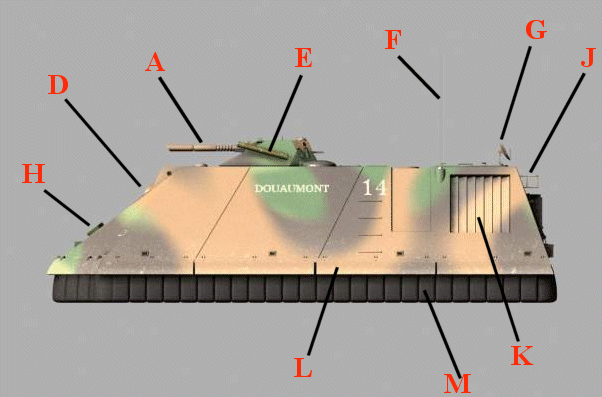
|
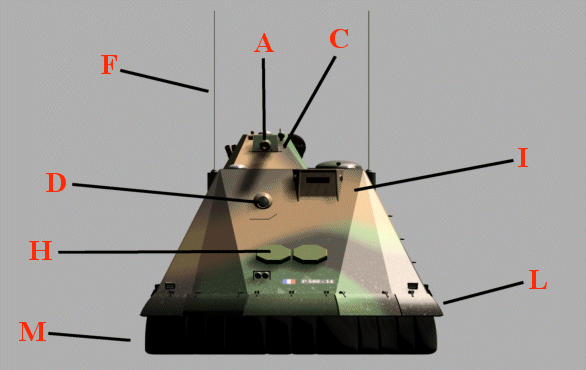
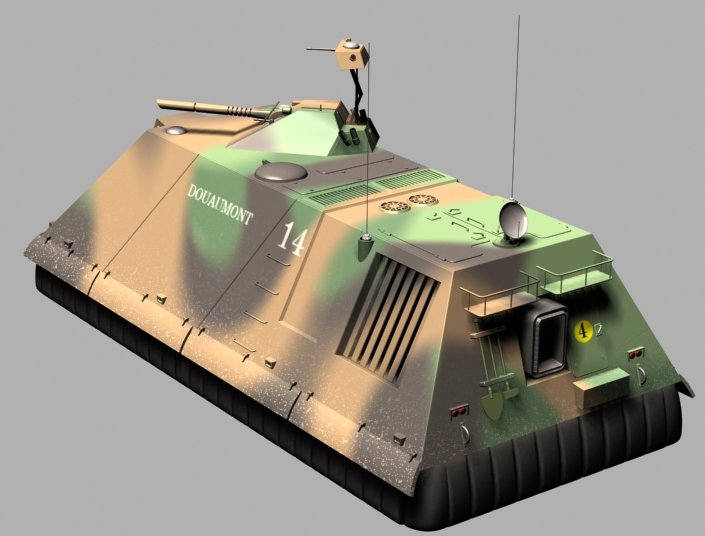
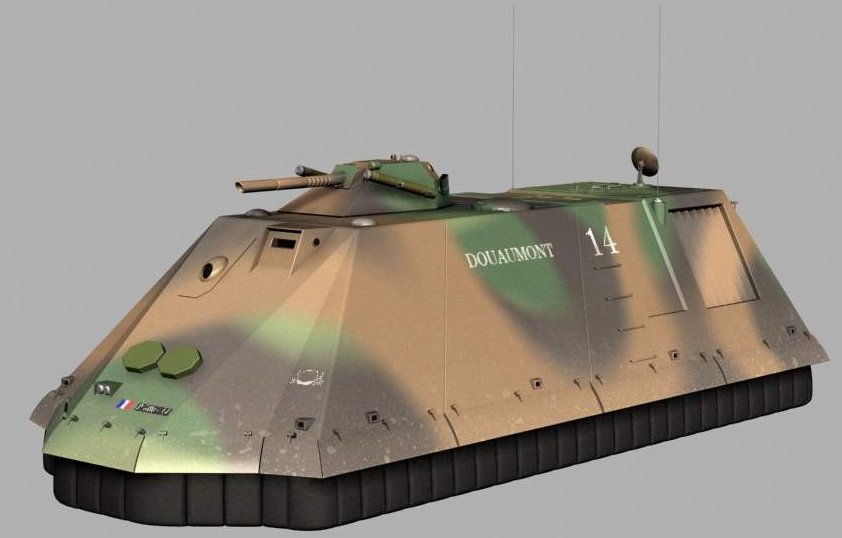
|
AC-12, 4e Escadron,
4e Régiment de Cuirassiers, 21e Division de Marche This AC-12 'Douaumont' belongs to the 4e Cuirassiers who were part of the regular French force deployed on Beta Canum. The 21e DM was rotated to Beta Canum to counter regular Bundeswehr forces sent to the German Continent following the war. The division was the high intensity warfare reserve force for 9e Corps. The vehicle is part of the 4e Escadron and carries a 'D' series name like the other AC-12s in that sub-unit. It carries only a small tactical insignia identifying sub-unit, unit and formation on the front left hull. On the rear of the hull there is a small sub-unit tactical insignia indicating regiment (Yellow), squadron (round) and troop (4). The camouflage scheme is the typical warm temperate scheme and is also in use with the Armée de l'Asie Centrale. The 4e Cuirassiers were engaged in the desperate actions of 'Black February' 2302 and were part of 21e DM's vain attempt to halt the Kafer invasion of Beta Canum. Eventually surrounded and isolated the regiment was destroyed completely. It has since been reformed from a cadre of survivors and new recruits on Earth. |
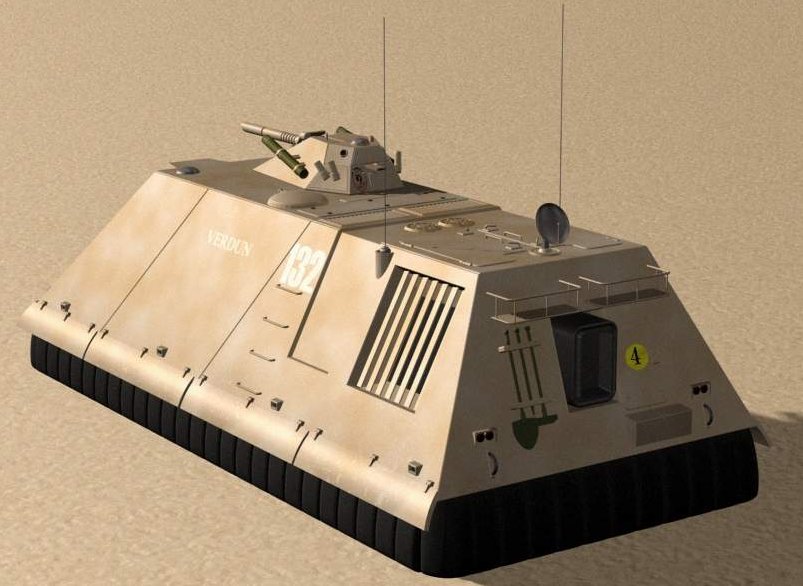
|
AC-12bis, EMT 1,
12e Régiment d'Aero-Cuirassiers, 2e Demi-Brigade, 1e Division de
Marche This AC-12bis 'Verdun' belongs to the regimental HQ of the 12e Cuirassiers. This regiment was part of a demi-brigade of the 1e DM dispatched to Kimanjano in response to the Kafer invasion, the remainder of the division went to Nous Voila. The role of the demi-brigade was to give mobile support to the infantry forces defending Kimanjano should the Kafers penetrate that far. After the Kafers bypassed Nous Voila further armoured forces were sent to Kimanjano from Nouvelle Europe on Beowulf. The vehicle carries the usual tactical insignia on the front of the hull. The sub-unit insignia on the rear of the hull seems to incorrect, suggesting the vehicle was moved to the Regimental HQ from one of the squadrons. The vehicle is painted with a colour scheme that blends in with the terrain in the non-terraformed areas of Kimanjano. The 12e Cuirassiers and the Régiment de Carabiniers 'Prins Boudewijn' were heavily involved in the six week campaign to defend Fromme. However after serious attrition and the fall of the city the regiment fought in the rearguard as the French forces fell back into the mountains. The remaining AC-12s were destroyed and abandoned as part of the final evacuation of troops from the planet. The 12e Cuirassiers reformed on Beowulf and fought with the Armée de Libération before being repatriated to Earth. |
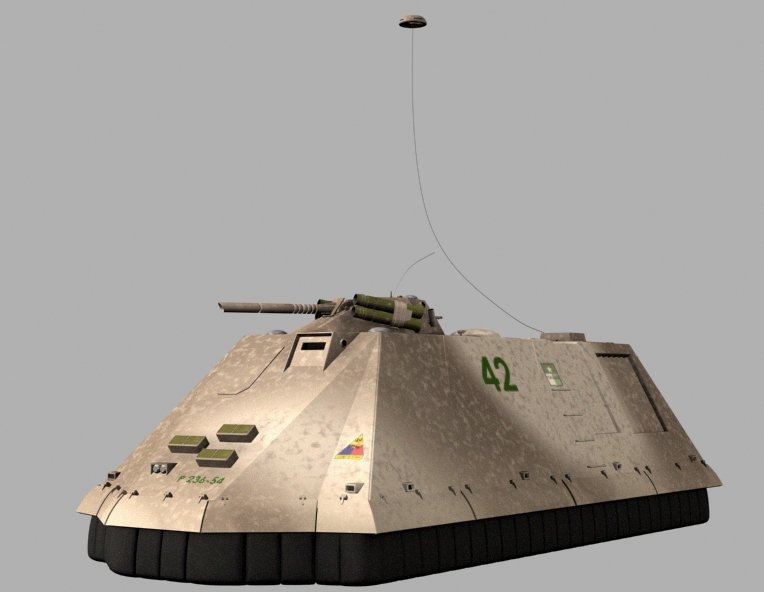
|
AC-12T, A Company,
1-112th Texas Armored Regiment, 49th Texas Armored Brigade This AC-12T is shown during the ceremony accepting the type into service with the Republic of Texas Army at Fort Hood. The AFV belongs to A Company, 1-112th Texas Armored Regiment of the independent 49th Texas Brigade. Equipped with the most modern equipment in the Texan inventory the brigade is a rapid reaction formation tasked with spearheading counter-attacks against any Mexican incursion. Texan vehicles are commonly decked out with both formal and informal insignia. This particular vehicle carries the nation flash, historic 49th Texan Armored Brigade and 112th TAR insignia. Key recognition features are the MEWS pods on the side of the turret, the plated over Manta launcher and the Whisperdrone UAV. The vehicle carries the standard Texan mottled desert camouflage pattern. A company of Texan AC-12Ts from the 2-112th TAR are currently deployed to Aurore as part of the Texan Task Force Alamo contingent. The remainder of the 49th Texan Armored Brigade is about to hand on its AC-12Ts to the 56th Texas Armoured Brigade and receive the first Brazilian built ACC-20s into service. In this article I have tried to follow canon closely, however in terms of development timelines the canon description of the AC-12 has some problems. The Ground Vehicle Guide states that development of the AC-12 began 'shortly after the Central Asian War', that the interim AC-10 was fielded, and then the AC-12 was introduced with enough produced to equip 1/3rd of the French Army by 2292. This means that in the space of five years two designs have been developed, produced and entered into service. It also means that the AC-8 would have been in service for more than 15 years without any significant work having been done on a successor. Even given 2300 technology I find this timeline unlikely. Instead I have lengthened the development process significantly and even introduced the AC-10 in small numbers during the Central Asian War. I have the AC-12 entering service with the French Army in 2289, which, in my opinion, is in just enough time for substantial numbers to be available in 2292. For those who like to adhere to the letter of canon please ignore my take on the development process and have both vehicles developed immediately after the Central Asian War. |